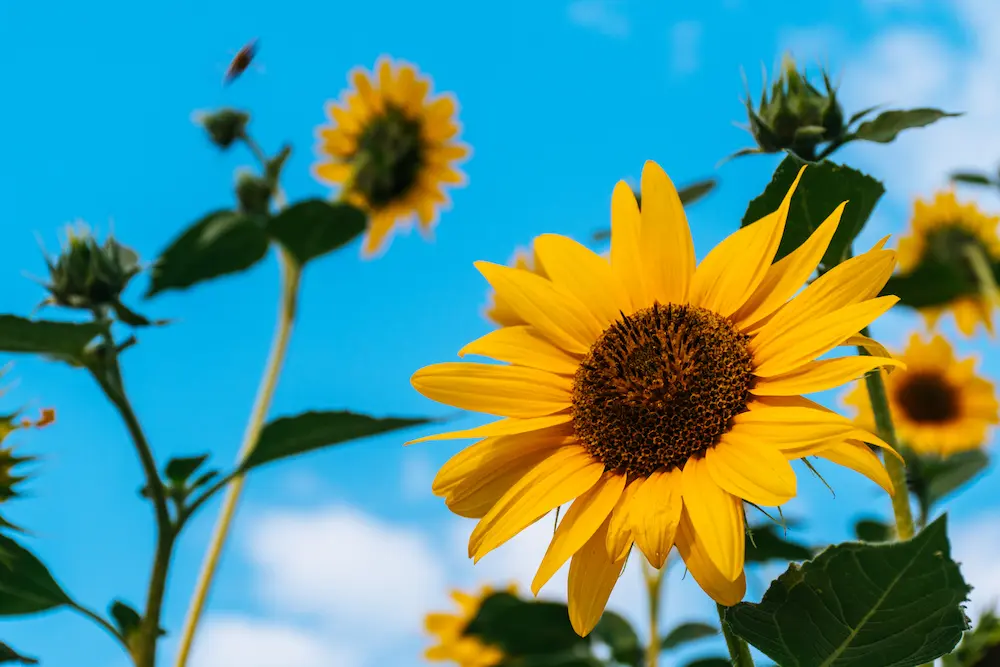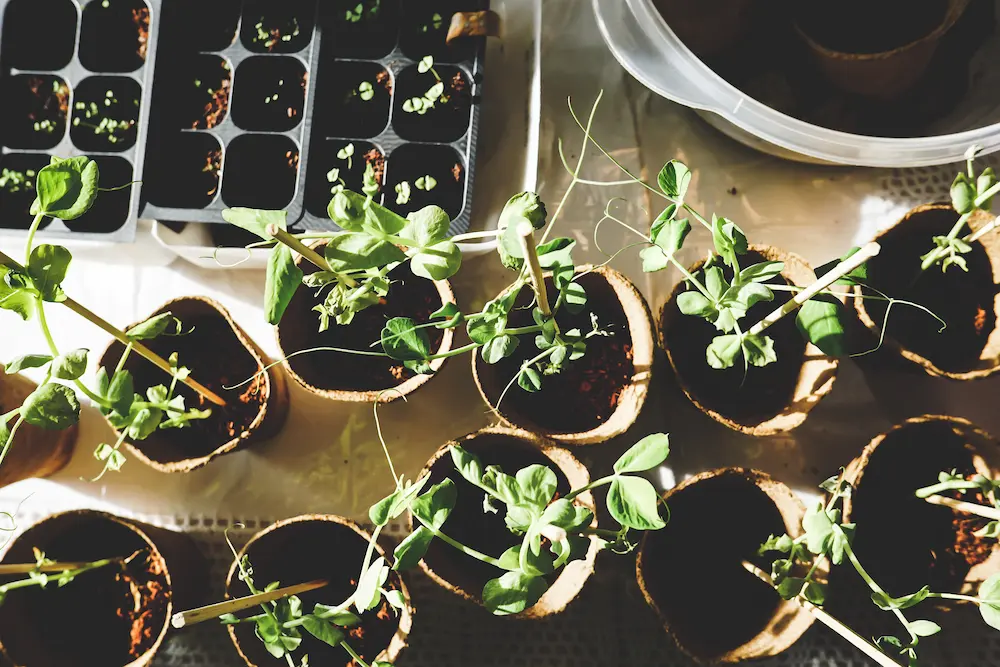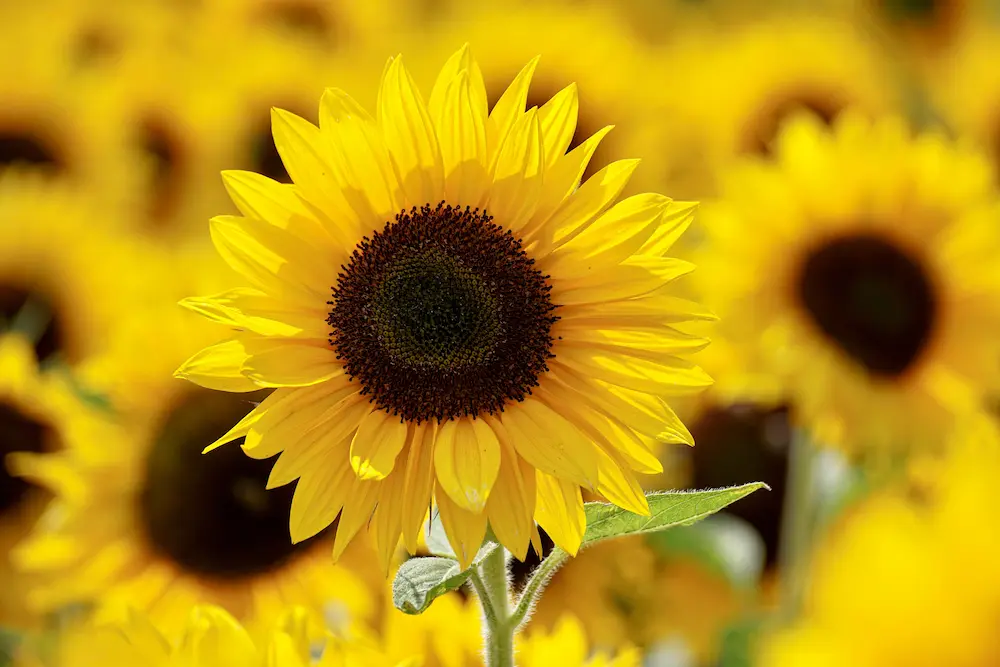Sunflowers, with their iconic yellow petals and towering stems, are a beloved addition to any garden. Their vibrant beauty, coupled with their easy cultivation, makes them a popular choice for both novice and experienced gardeners. In this guide, we walk you through the step-by-step process of how to grow and care for sunflowers, from selecting the right variety to harvesting the seeds.
Discover the secrets to successful sunflower cultivation and unlock the joy of watching these stunning flowers flourish in your own backyard.
Why grow sunflowers?
There are several compelling reasons to grow sunflowers in your garden. Sunflowers are renowned for their striking beauty and vibrant colors, adding a pop of yellow, gold, or even red to your outdoor space.
Not only are they visually captivating, but sunflowers also attract bees, butterflies, and other beneficial pollinators, making them valuable contributors to your garden’s ecosystem. Sunflowers also provide an educational opportunity for children to learn about plant life cycles and the importance of pollinators. With their tall, sturdy stems, sunflowers can act as natural windbreaks and privacy screens.
Step-by-step guide: Grow and care for sunflowers



Step 1: Choose the right variety
Sunflowers come in various sizes and colors, so choose a variety that suits your preferences and gardening space. Common varieties include the giant sunflower (Helianthus annuus), dwarf sunflower, and colored sunflowers.
Step 2: Select a suitable location
Sunflowers need plenty of sunlight to grow and thrive. Choose a location in your garden that receives full sun for at least 6 to 8 hours a day. Ensure that the soil is well-draining and rich in organic matter.
Step 3: Prepare the soil
Before planting, prepare the soil by removing any weeds and loosening it with a garden fork or tiller. Sunflowers prefer a slightly acidic to neutral pH level of around 6.0 to 7.5. Amend the soil with compost or well-rotted manure to improve its fertility.
Step 4: Sow sunflower seeds
Sunflowers can be directly sown into the ground once the frost has passed and the soil has warmed up. Dig a hole about 1-2 inches deep and place a seed in each hole. Space the seeds according to the recommended distance for the specific variety you’re planting (usually 1-3 feet apart).
Step 5: Water regularly
Keep the soil consistently moist but not waterlogged. Water the seeds immediately after planting and continue to water them regularly until they germinate. Once the plants have established, they become more drought-tolerant, but it’s still important to water deeply during dry spells.
Step 6: Provide support
As sunflowers grow tall, they may require support to prevent them from toppling over. Insert a stake or a bamboo pole near the base of the plant and gently tie the stem to the support as it grows. This will help the sunflower maintain an upright position.
Step 7: Fertilize
Sunflowers are relatively low-maintenance plants but can benefit from occasional fertilization. Apply a balanced, slow-release fertilizer around the base of the plants during the growing season. Follow the manufacturer’s instructions for the recommended dosage.
Step 8: Monitor for pests and diseases
Keep an eye out for common pests like aphids, snails, and slugs. If necessary, use organic insecticides or deterrents to protect your sunflowers. Watch for signs of diseases such as powdery mildew or downy mildew, and promptly treat any infected plants to prevent the spread.
Step 9: Harvest sunflower seeds
Monitor the back of the sunflower heads as they mature. The back of the head will turn brown and the seeds will start to loosen. Once the seeds are fully developed, cut off the head with a few inches of stem attached. Hang the heads upside down in a dry and well-ventilated area to allow the seeds to finish drying.
FAQ: Growing and harvesting sunflowers
How long do sunflowers take to grow?
Sunflowers generally take around 70 to 100 days from planting to maturity, depending on the variety.
Can I grow sunflowers in pots or containers?
Yes, sunflowers can be grown in large pots or containers. Choose a variety suitable for container gardening and ensure the container has drainage holes.
Do sunflowers need special care during the summer?
Sunflowers are fairly hardy and can withstand the summer heat. Just make sure they receive adequate water and monitor for pests and diseases.
How often should I water sunflowers?
Water sunflowers regularly, keeping the soil consistently moist. As the plants mature, they become more tolerant of drought but still require deep watering during dry spells.
Can I save sunflower seeds for planting next year?
Yes, you can save sunflower seeds for planting next year. Allow the flower heads to fully dry on the plant, then remove the seeds and store them in a cool, dry place.
Can I cut sunflowers to use as cut flowers?
Absolutely! Sunflowers make beautiful cut flowers. Cut them when the blooms are fully open but before the petals start to wilt. Place them in water immediately to prolong their freshness.
Want more gardening tips? Next, learn the best home garden vegetable ideas!






Leave a Reply